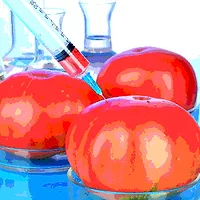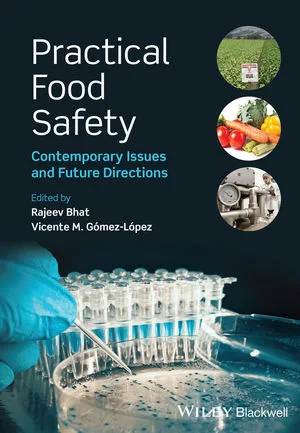Are All Salmonella Created Equal?

With each passing poultry-associated Salmonella outbreak over the past few years, there has been an increased focus on this pathogen and its control. Along with that is an increasing use of the term “virulent.” But what does virulent really mean, and should we worry about some strains being more virulent than others? Does evading mitigation in processing make a pathogen “more virulent,” as some seem to indicate? Does the fact that a strain is antibiotic resistant define it as more virulent? As we look at how the term “virulent” is being used by the public health community, regulators, consumer groups and others – often extending beyond the molecular and clinical definition – what impact will this have on food processors and future policy measures?
To go back to the beginning: To understand the conundrum, we need to first understand what we mean by virulent, and ensure that everyone is using the same definition. Right now we’re not all on the same page. As defined in relation to pathogens by the Miriam Webster Medline dictionary, virulent is “able to overcome bodily defense mechanisms.” Or, in simpler terms – able to make you sick. Overcoming bodily defense mechanisms is different than overcoming food industry or consumer mitigations (like high pressure or cooking). It’s different than resisting clinical treatments (like antibiotics). But recent statements equating virulence with antibiotic resistance, or suggesting that resistance to heat results in increased virulence, begins to blur these issues together. This has caused confusion and could lead some down the wrong path to finding a solution that reduces illness.
Now, to get a little techier, what makes a strain of bacteria more or less virulent (or able to make you sick) begins with its genetic make-up. Genes encode proteins and proteins can result in clinical effects. A good example is that an E. coli strain that makes Shiga Toxins (like O157:H7) is generally more virulent than the same bacteria that does not make Shiga Toxins. Strains can evolve to become more virulent, swapping genes and whole chunks of DNA (sometimes referred to as pathogenicity islands) and other genetic components that enhance the ability of the strain to survive through the digestive tract, and bypass or fool the human’s immune response.
What does not make a strain more virulent is resistance to processing, or its ability to evade mitigation. To explain: Say a chicken carcass has 10 strains of Salmonella. Say, further, that after processing one strain was able to evade all processing controls and remains on the chicken. To say that just because it is there it will make someone sick is not a foregone conclusion. Salmonella Kentucky is commonly found on chicken – but it’s rarely associated with illness. With that said, one has to ask why certain strains tend to hang around on chicken more than others. And is their ability to “stick” to poultry somehow associated with the likelihood they will cause illness? So far the connection has not been made, but we can’t rule it out.
Another question that often emerges is whether Salmonella strains that are resistant to antibiotics are more likely to make you sick. The jury is still out on that one, but the reason a strain becomes resistant to antibiotics is because it picks up new genes. Sometimes groups of genes move together, so it is possible that when a Salmonella strain acquires an antibiotic resistance gene it also picks up some new gene at the same time that confers a greater ability to cause infection – i.e., more virulent.
What is important with regard to antibiotic resistance is that, if a person does get sick and needs antibiotics, it is important for the patient that the antibiotic prescribed by the physician will work. If the Salmonella are resistant to antibiotics, that may not always be the case. Why some strains of Salmonella are more likely to make some people sick than others goes back to the techy molecular biology research. But at least so far, science doesn’t support a blanket statement that virulent strains are more likely to be resistant to antibiotics than less-virulent strains.
We could do a lot more for human health by better understanding which strains are more likely to make people sick, finding out why, and finding ways to prevent that. If it’s because they are truly more virulent (more likely to make people sick, all else being equal), then do we go down the road of pinpointing efforts in the food industry against those worst offenders?
Looking for quick answers on food safety topics?
Try Ask FSM, our new smart AI search tool.
Ask FSM →
Have some strains of Salmonella figured out a way to avoid current mitigations? Do we change our mitigations (developing new rinses, new processing methods, changing recommended cooking temperatures, etc.)? The approach to protecting public health – and industry’s role in doing this – could be very different depending on that root cause.
Today we have the challenge that we simply don’t have answers to all these questions. Only by getting answers can we better control risk both in plants and with regard to public health. We need to ensure we have answers before any new regulatory policy is put in place. But at this stage of the game, with Salmonella, my instincts are that they are not all created equal. However, can we afford to ignore some strains vs. other strains from a public health perspective in humans? Not yet.
Reprinted with permission from The Acheson Group Blog.
By Dr. David Acheson is the Founder and CEO of The Acheson Group. Dr. Acheson brings more than 30 years of medical and food safety research and experience to the firm. Prior to forming The Acheson Group, David served as the Chief Medical Officer at the USDA Food Safety and Inspection Service and then in 2002 joined the U.S. Food and Drug Administration as the Chief Medical Officer at the FDA Center for Food Safety and Applied Nutrition (CFSAN). After serving as the Director of CFSAN’s Office of Food Defense, Communication and Emergency Response, David was appointed as the Assistant and then Associate Commissioner for Foods which provided him an agency-wide leadership role for all food and feed issues and the responsibility for the development of the 2007 Food Protection Plan, which served as the basis for many of the authorities granted to FDA by the Food Safety Modernization Act.
Since founding the food safety practice within Leavitt Partners in July 2009, David has used his regulatory insight, food safety knowledge, and expertise in crisis response to advise food industry clients around the globe on how to best manage risk in a global supply chain and evolving regulatory landscape.




![safer employee behavior[1].jpg](https://www.food-safety.com/ext/resources/fsm/cache/file/65FFAAC8-D192-4FCC-AFD5C0009630D850.webp?height=200&t=1611014276&width=200)



